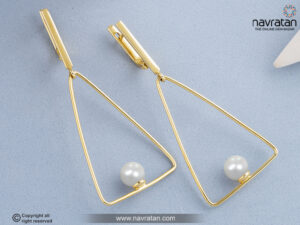
Pearl stones, also known as “pearls,” are a natural gemstone that is formed inside of certain mollusk species such as oysters and mussels. These unique gemstones have been admired and treasured for thousands of years, with their natural beauty and rarity making them highly sought after. In this blog post, we will explore the natural beauty of pearl stones and how to appreciate them in their natural form.
The formation of pearl stones is a fascinating process. Inside of certain mollusk species, a small irritant such as a grain of sand or a parasite can make its way inside the mollusk’s shell. In response to this irritant, the mollusk will secrete a substance called nacre, which coats the irritant and forms a pearl. This process can take several years to complete, with the pearl growing in size and luster over time.
One of the most striking features of pearl stones is their natural luster. This luster, also known as “orient,” is the result of light reflecting off of the many layers of nacre that make up the pearl. The more layers of nacre, the more intense the luster will be. Natural pearls have a unique luster that can’t be replicated in man-made pearls, making them highly valued by collectors and connoisseurs.
Another unique aspect of pearl stones is their natural color. While most people associate pearls with being white or cream-colored, they can actually come in a wide range of natural colors, including pink, yellow, silver, and even black. The color of a pearl is determined by the color of the mollusk’s nacre and the water it lives in. For example, pearls that form in black-lipped oysters will have a dark color, while pearls that form in white-lipped oysters will have a lighter color.
The shape of pearl stones is also determined by nature. Natural pearls can come in a wide range of shapes, including round, oval, button, drop, and baroque. Baroque pearls, in particular, are highly prized for their unique and irregular shapes. These pearls are formed without the use of a bead nucleus, which is used in cultured pearl production.
When it comes to appreciating the natural beauty of pearl stones, it’s important to consider the source. Natural pearls are extremely rare, with only a small percentage of pearls found in the wild being suitable for use in jewelry. These pearls are highly valued for their natural beauty and rarity, and are considered to be true works of nature. On the other hand, cultured pearls are created using a bead nucleus and are more readily available on the market. They are still beautiful and valuable, but not as rare as natural pearls.
One of the best ways to appreciate the natural beauty of pearl stones is to see them in their natural setting. Visiting pearl farms and oyster beds can give you a deeper understanding of the process of pearl formation and the unique qualities of the pearls produced there. Many pearl farms offer tours and educational programs, which can be a great way to learn about the natural beauty of pearl stones.
When it comes to caring for your pearl stones, it’s important to remember that they are a natural product and should be treated with care. Avoid exposing your pearls to extreme temperatures or humidity
Also Check This Blogs:- The History of Pearl Stone: From Ancient Cultures to Modern Fashion artical
The Beauty and Versatility of Pearl Stones: A Guide to Choosing the Right Piece
Caring for Your Pearl Stone Jewelry: Tips for Keeping it Shining
Exploring the Different Types of Pearl Stones and Their Unique Qualities
